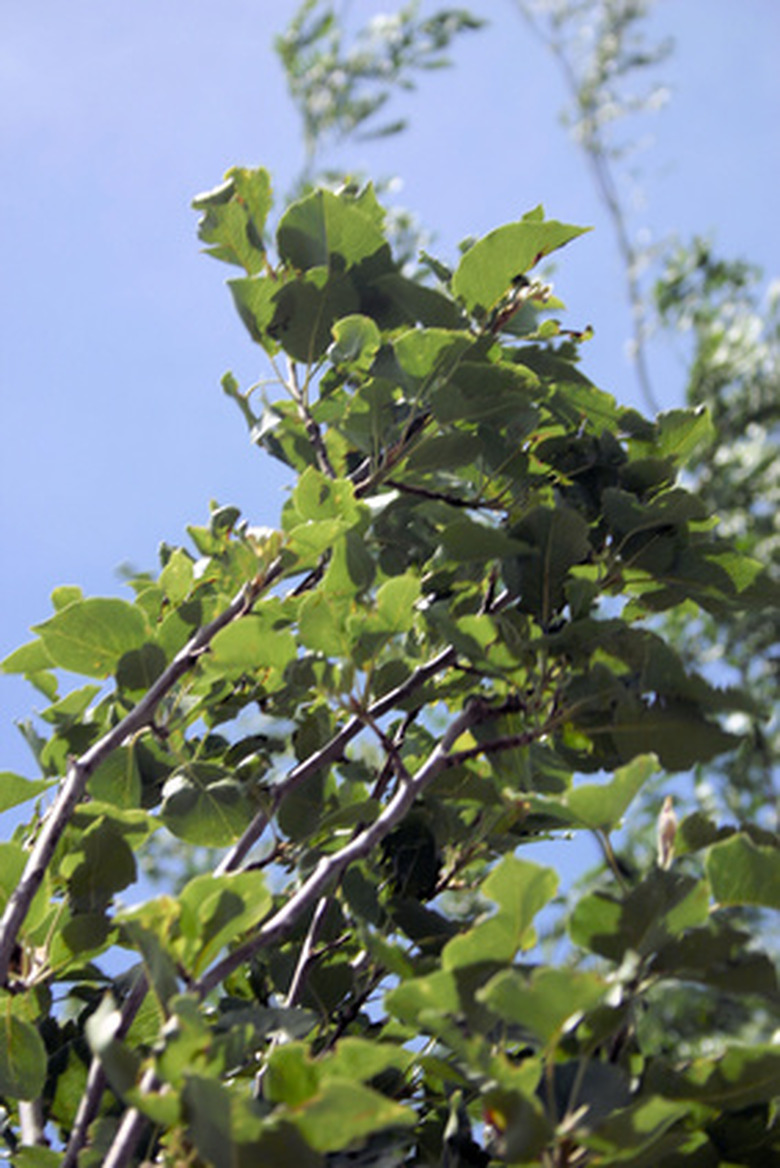How To Dig Out Bradford Pear Roots
According to the Alabama Cooperative Extension Service, Bradford pear trees are among the most popular ornamental trees in the Southeast. But because of their vigorous growth, weak wood and poor branch structure, the trees begin to deteriorate after 20 years. When a Bradford pear tree begins to fall apart, a homeowner may have no choice but to cut it down and remove it. Once the tree is removed, some homeowners choose to let the stump and roots naturally rot. But you can remove the largest roots to make room for new trees by digging them up in a process called grubbing.
Step 1
Remove soil from around the base of a stump with a folding shovel, mattock, weeding hoe and pick. Use progressively smaller tools to reach into tight places. Remove the soil to form a trench that is 2 feet deep by 2 feet wide around the stump.
- According to the Alabama Cooperative Extension Service, Bradford pear trees are among the most popular ornamental trees in the Southeast.
- Once the tree is removed, some homeowners choose to let the stump and roots naturally rot.
Step 2
Cut through the roots around the base of the Bradford pear tree stump to free the stump from the root system using your pruning saw, pruning shears, hammer and chisel and a mattock. Select the proper-sized tool for the size of roots. Pry the stump loose using a flay pry bar.
Step 3
Dig outward from the trench, following the roots that connected with the Bradford pear tree stump. Remove all of the dirt from around the roots and pry them upward from the soil using a pry bar. Comb through loose soil with a garden rake to remove tiny, hair-like roots that you may have otherwise missed.
Removal Of Bradford Pear Tree Roots
Like many other species, Bradford pear trees store energy in their roots, which can allow them to regrow even after being cut down. Shoots can sprout from the stump or anywhere along the roots. You can also reduce the risk of resprouting by treating the stump and any cut shoots with glyphosate or triclopyr herbicides. If you want to remove the stump and roots of your Bradford pear tree completely but you don't mind waiting, speeding up the decay process may be the best choice. Stump and root removal can be extremely difficult and time consuming. You can hide stumps by turning them into planter bases or by placing ivy and other twining plants nearby.
- Cut through the roots around the base of the Bradford pear tree stump to free the stump from the root system using your pruning saw, pruning shears, hammer and chisel and a mattock.
Things Needed
- Folding shovel
- Pruning saw
- Pruning shears
- Hammer
- Chisel
- Flat pry bar
- Mattock
- Pick
- Weeding hoe
- Garden rake
Tip
Make sure to wear protective gear, including long-sleeved shirt, long pants, sturdy boots, gloves and goggles when grubbing out a tree stump.
References
- Louisiana State University Extension: Stump Removal from Home Grounds
- University of Minnesota Extension: Removing Trees and Shrubs
- Alabama Cooperative Extension Service: Choose Alternatives to Bradford Pear Trees, Experts Advise
- University of California, Davis: Fire Blight
- Alabama Cooperative Extension: Choose Alternatives to Bradford Pear Trees
- University of Illinois: Bradford Pear Root Removal
- Southern Living: Bradford Pears Must Die
- Louisiana State University: Stump Removal From Home Grounds
- This Old House: Removing Tree Stumps
- The Georgia Gardener: Bradford Pear Trees — Resprouting Roots
